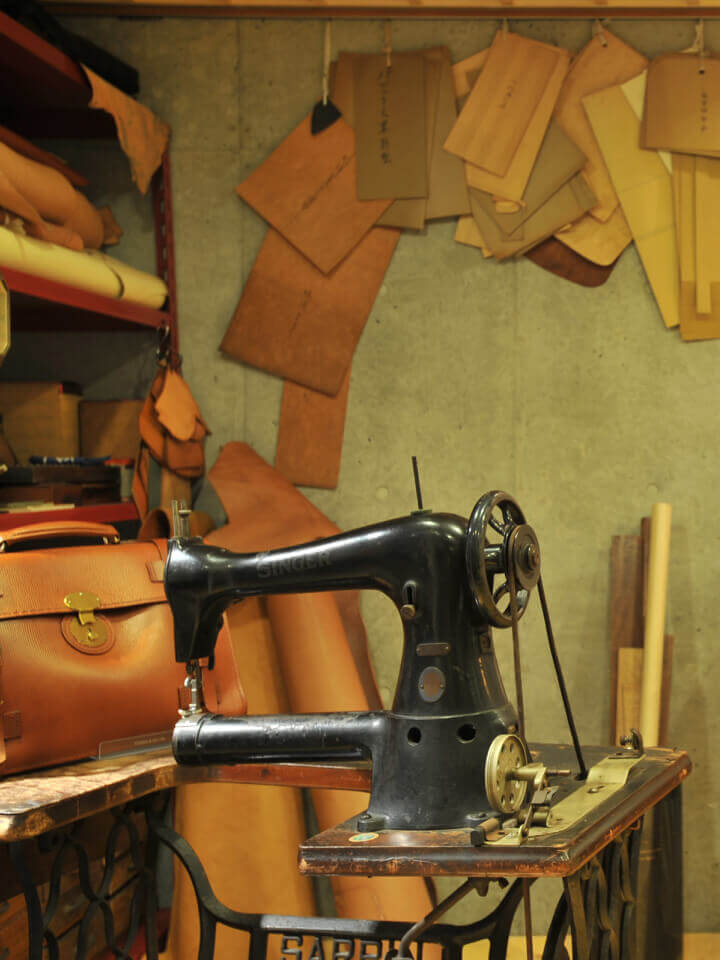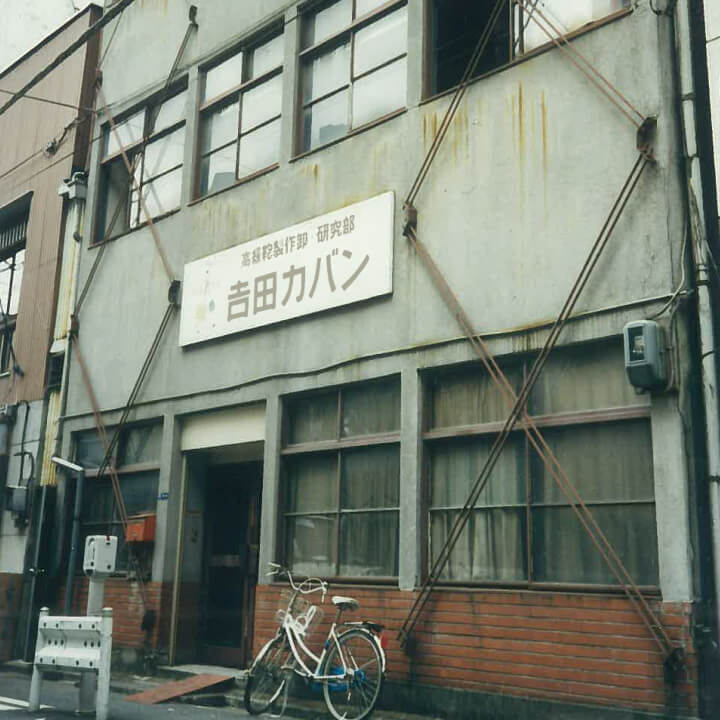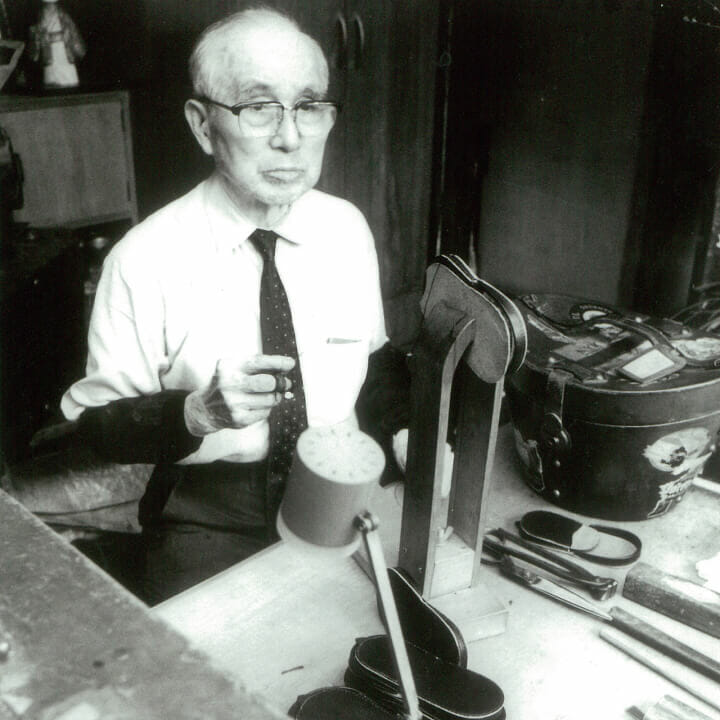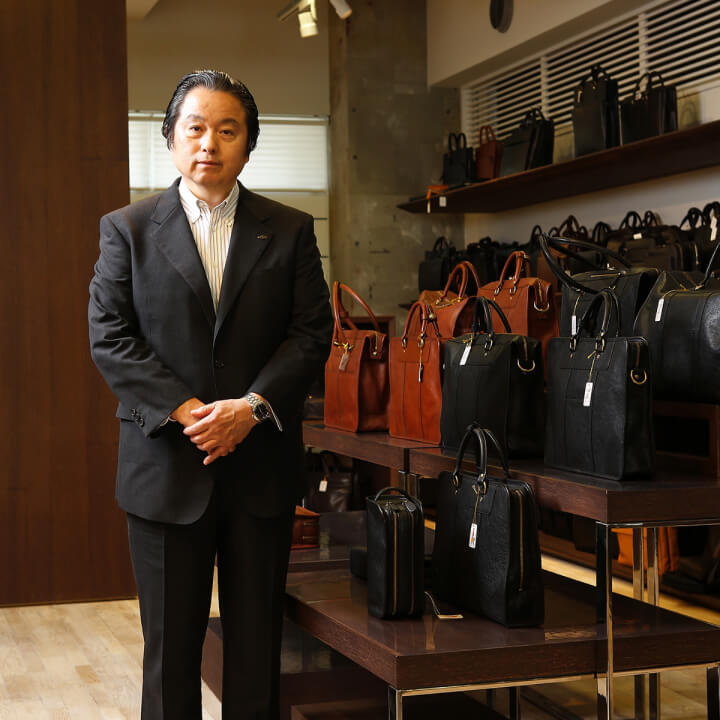
Creative: Yoshida Kaban
Yoshida Kaban:The tradition of craftsmanship that is the pride of Japan

"Each person involved in bag making should work hard with the spirit of "put your soul into each stitch".
This is the spirit that Kichizo Yoshida, the founder of Yoshida Kaban, who has created countless masterpieces, built his company on.
Since its founding, Yoshida Kaban has been producing domestically and has been working side by side with craftsmen. Third generation Mr. Teruyuki Yoshida, the third generation president and current chairman of the board, says, "As a Japanese manufacturer, even while society moves forward with globalization, we must succeed with the ‘power of the craft’ that our predecessors have built the company upon," and explains the importance of handing down Japanese manufacturing techniques. Inside the company, the Mimosa Award, which is given to those who have made achievements in the fashion industry, is displayed, and the words, "Mr. Kichizo Yoshida and the craftsmen of Yoshida Kaban" are written. The recipient was Mr. Kichizo himself, but he was adamant in including the names of the craftsmen.
"I think he had a strong feeling that he came up with the craftsmen. He felt it was important to carry on the legacy of the craftsmen. That was the wish of the founder."
Yoshida Kaban and Mr. Kichizo Yoshida have helped build the Japanese bag culture together with domestic craftsmen. Let's unravel the history.
Born in Samukawa Town, Kanagawa Prefecture in 1906, Kichizo went on to become a bag craftsman at the age of 12, and after training at a long-established bag studio in Ueno, he founded Yoshida Kaban Seisakujo at the age of 29 in 1935. In 1951, it was reorganized into a joint-stock company, Yoshida & Co., Ltd., and with the cooperation of craftsmen, they slowly moved forward with mass production. What made Yoshida Kaban widely known to the world was the "Elegant Bag," which allowed the gusset to be widened or narrowed with a side zipper, and recorded explosive sales. When this bag was developed in 1953, it was around the time when housing projects began to be built in Japan. Businessmen during this post war economic boom era supported the fact that the bag wouldn’t take up space in their small houses, and also that it was stylish.
Chairman Teruyuki says, "I think this Elegant Bag clarified the company’s concept of "creating products that fit with the times". After the company was founded, Kichizo mostly handled the company’s management, but he made sure to visit the workplaces of the craftsmen every month, as well as the stores that carried the company’s products.

A photo of the old headquarters building. Moved the office building from Kanda Sudacho to Higashikanda, where the current head office is located, and reorganized from Yoshida Kaban Seisakujo. to Yoshida & Co., Ltd.
In the 1950s, he was one of the first to focus on human resource development, such as sending designer candidate employees to an art university. He also donated the patent for the Elegant Bag to the Bag Association in an attempt to revitalize the Japanese bag industry.
"My father was trying to establish his identity as a manufacturer early. He tried to change the flow of distribution, from stores buying bags they like from the craftsmens, to manufacturing that carries the heart and soul of the creator."
Then, in 1962, Yoshida's main brand, "Porter," was announced. At that time, bag makers rarely launched private brands. The name "Porter" comes from the porter of the hotel who are pros in handling bags, and the wish for people to travel the world with Yoshida’s bags. Kichizo and his colleagues aimed to make bags made with the wonderful techniques of craftsmen that would live on as a culture in people’s lives.

After the reorganization, Kichizo devoted himself to management, but in his later years, went back to be devoted to hand-sewn work. His ideas were endless, trying to thread leather in bed right up to his death.
Yoshida & Co., Ltd. attracted more and more employees who were actually passionate about bags and had a sense of purpose. The motivation and enthusiasm of the creator increased, and the "luggage label" and long-selling series were announced one after another, and Yoshida’s bags became popular throughout the world.
And now, Yoshida Kaban is also embarking on efforts to protect the origin idea of "putting your soul into each stitch". For young employees who want to become bag craftsmen, they created a ‘production department’ to back them up. Employees in their twenties are currently training under the craftsmen they cooperate with.
"I understand that learning the craft takes a tremendous amount of time and effort, but as a company, I can't help but support our young employee’s enthusiasm. To be honest, we’re still trying to figure things out. However, I also feel it is our mission to play a role in handing down the excellent techniques of Japanese bag craftsmen. "
Kichizo always believed that communication with the craftsmen was key. That belief is still carried on at the product development site of Yoshida & Co., Ltd. The production team and the craftsmen discuss and make numerous samples until the final product is decided. Together, they will discuss and argue if necessary, with the common belief that "wanting people to be happy to use our bags created with the technique that can only be achieved in Japan."
"’I want to make a good bag.’ It's that same belief as when my father was working with his craftsmen."
"Good product leads to profit" is a saying that Kichizo always said. This is the origin of Yoshida & Co.'s manufacturing. Communication that seeks new technologies is important. That may be the true power of ‘Made in Japan’.

Chairman of the Board, Yoshida Co., Ltd.
Teruyuki Yoshida
After graduating from the School of Business and Commerce at Keio University in 1969, he joined Yoshida and was in charge of purchasing and inventory management at the warehouse, and then assigned to the Product Management Department. He became Managing Director in 1990, Vice President in 2000, President in 2002, and Chairman of the Board in 2020.